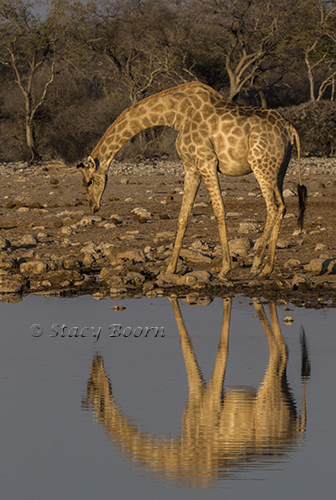 It’s almost miraculous that so many African animals manage to eke out an existence in the arid, desert-like environment of Namibia — elephants, lions, cheetah, rhinos, oryx and wild horses to name a few. We can be sincerely thankful that Namibia’s progressive, community-based approach to conservation protects so much wildlife by providing hundreds of square miles of sanctuary and poaching-free zones.
It’s almost miraculous that so many African animals manage to eke out an existence in the arid, desert-like environment of Namibia — elephants, lions, cheetah, rhinos, oryx and wild horses to name a few. We can be sincerely thankful that Namibia’s progressive, community-based approach to conservation protects so much wildlife by providing hundreds of square miles of sanctuary and poaching-free zones.
In the vast flagship of the Namibian park system, Etosha National Park, you will find an out-and-out profusion of wildlife around the numerous waterholes. Here the magic happens, whether it’s a herd of elephants filling their trunks with water, a rhino reflected in the water by the light of a full moon, or a giraffe reaching down for a drink with its legs splayed like a circus performer.
 Etosha National Park is one of the world’s premier wildlife reserves. The size of Switzerland, Etosha is a semi-arid savannah, with grassland and thorn scrub surrounding a flat saline desert pan, a calcium-rich, impermeable earthen crust. The name Etosha is variously translated ‘Place of Mirages’, ‘Land of Dry Water’ or ‘Great White Place’.
Etosha National Park is one of the world’s premier wildlife reserves. The size of Switzerland, Etosha is a semi-arid savannah, with grassland and thorn scrub surrounding a flat saline desert pan, a calcium-rich, impermeable earthen crust. The name Etosha is variously translated ‘Place of Mirages’, ‘Land of Dry Water’ or ‘Great White Place’.
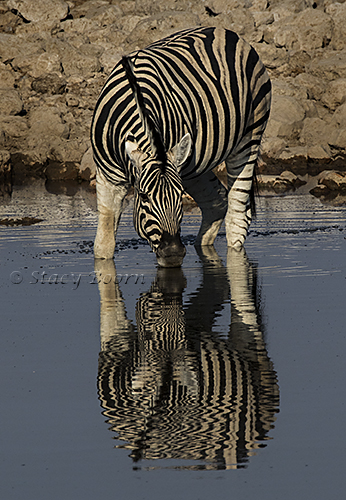 Although dry and dusty, Etosha Park is a haven for 114 kinds of mammals and 340 bird species. Some of the stars of Etosha are its endemic black-faced impala and elephants. These elephants are huge, the tallest in Africa, measuring up to 14 feet at the shoulder; they are awe-inspiring to see even though mineral deficiencies and their habit of digging for water result in short tusks. The resident giraffe belong to a subspecies found only in the park and in north-western Namibia.
Although dry and dusty, Etosha Park is a haven for 114 kinds of mammals and 340 bird species. Some of the stars of Etosha are its endemic black-faced impala and elephants. These elephants are huge, the tallest in Africa, measuring up to 14 feet at the shoulder; they are awe-inspiring to see even though mineral deficiencies and their habit of digging for water result in short tusks. The resident giraffe belong to a subspecies found only in the park and in north-western Namibia.
To give a sense of just how easy it to escape from “the world†in Namibia, compare it with Germany, its former colonial ruler. Namibia is twice the size of Germany, but, while Germany has a total population in excess of 80 million, Namibia’s human population is just a tad over two million.
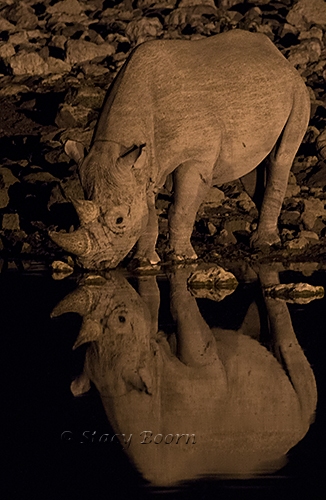 Okaukuejo, the first tourist camp inside Etosha Park, was built beside a well-established waterhole, now the main feature of the camp. All day and into the flood-lit early hours of the night, an orderly parade of animals come to the waterhole. Visitors can sit in comfort inside the camp with only a low wall between them and herds of elephants, rhinos and even a pride or two of lions gulping the thirst-slaking liquid.
Okaukuejo, the first tourist camp inside Etosha Park, was built beside a well-established waterhole, now the main feature of the camp. All day and into the flood-lit early hours of the night, an orderly parade of animals come to the waterhole. Visitors can sit in comfort inside the camp with only a low wall between them and herds of elephants, rhinos and even a pride or two of lions gulping the thirst-slaking liquid.
Shortly after dusk on our first evening we witnessed 10 elephants slowly marching toward the waterhole. In the distance, other animals stood still and watched the elephants slurp and splash in the pool’s water for about 10 minutes before they finally sauntered off in the opposite direction. Then, group by group, the other animals would take their turn, drinking only after spying out the horizon to check for possible danger. It was like a slow-motion video – the zebras went to the water’s edge, then the giraffes followed by the rhinos. Awesome!
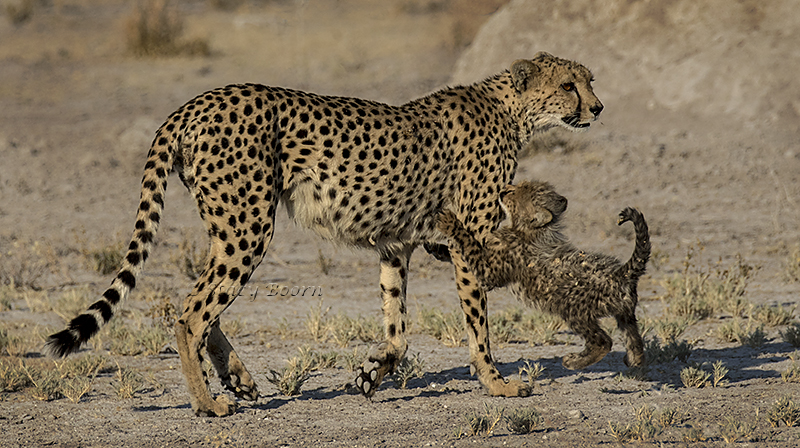 It was as if I were standing some 50 feet away from a menagerie-carousel come alive, each row of animals slowly sliding off the revolving floor and finding its way to this pool of water, so unique and precious in the otherwise dry and rocky terrain. No calliope was playing; there was only the sound of swooping birds, a few jackal grunts and the scuffling of soft-padded feet, but it was more magical and lovely than any orchestra could play, music of the night.
It was as if I were standing some 50 feet away from a menagerie-carousel come alive, each row of animals slowly sliding off the revolving floor and finding its way to this pool of water, so unique and precious in the otherwise dry and rocky terrain. No calliope was playing; there was only the sound of swooping birds, a few jackal grunts and the scuffling of soft-padded feet, but it was more magical and lovely than any orchestra could play, music of the night.
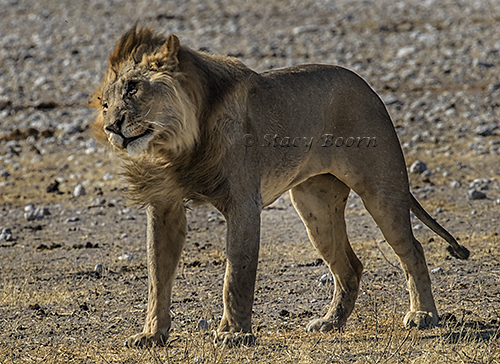 The large mammals in Etosha National Park include lion, leopard, elephant, rhino, giraffe, wildebeest, cheetah, hyena, mountain and plains zebra, springbok, impala, kudu, oryx and eland. Among the smaller species one can find the dik-dik, black-back jackal, bat-eared fox, warthog, honey badger and ground squirrel. Except for the leopard, hyena and honey badger, we saw all these and, of course, dozens of different birds.
The large mammals in Etosha National Park include lion, leopard, elephant, rhino, giraffe, wildebeest, cheetah, hyena, mountain and plains zebra, springbok, impala, kudu, oryx and eland. Among the smaller species one can find the dik-dik, black-back jackal, bat-eared fox, warthog, honey badger and ground squirrel. Except for the leopard, hyena and honey badger, we saw all these and, of course, dozens of different birds.
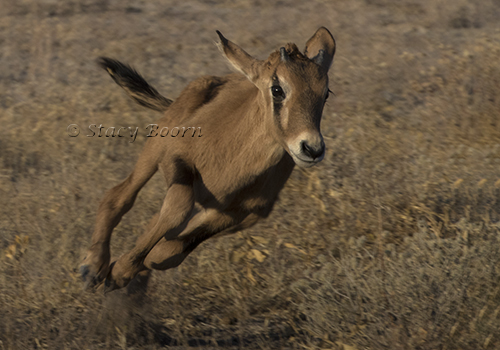
If one needs concrete proof that human beings are not the center of the universe, a few days in Etosha will put things in perspective. We need to learn from our fellow-inhabitants on this planet. The straight and twisted antlers of the many “antelopes,†for instance, reach sun-ward and point our gaze in new directions! The animals at the edge of the “Great White Place†grace us with a greater attitude of reverence and appreciation for all creatures large and small. (Image: Oryx calf tries out new legs)
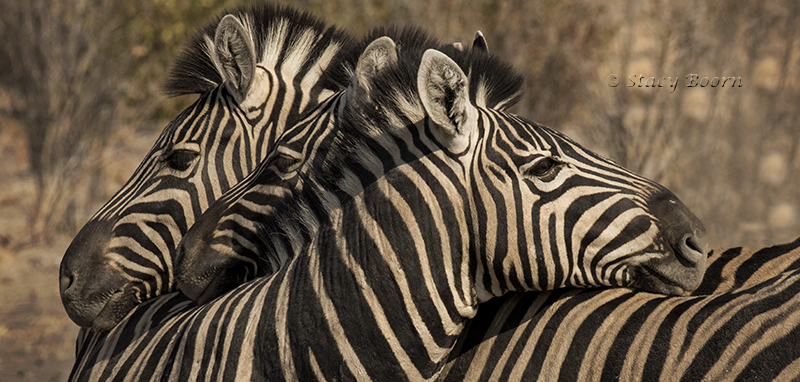 What a life-enhancing delight it was to ride the carousel of creation in Namibia!
What a life-enhancing delight it was to ride the carousel of creation in Namibia!
